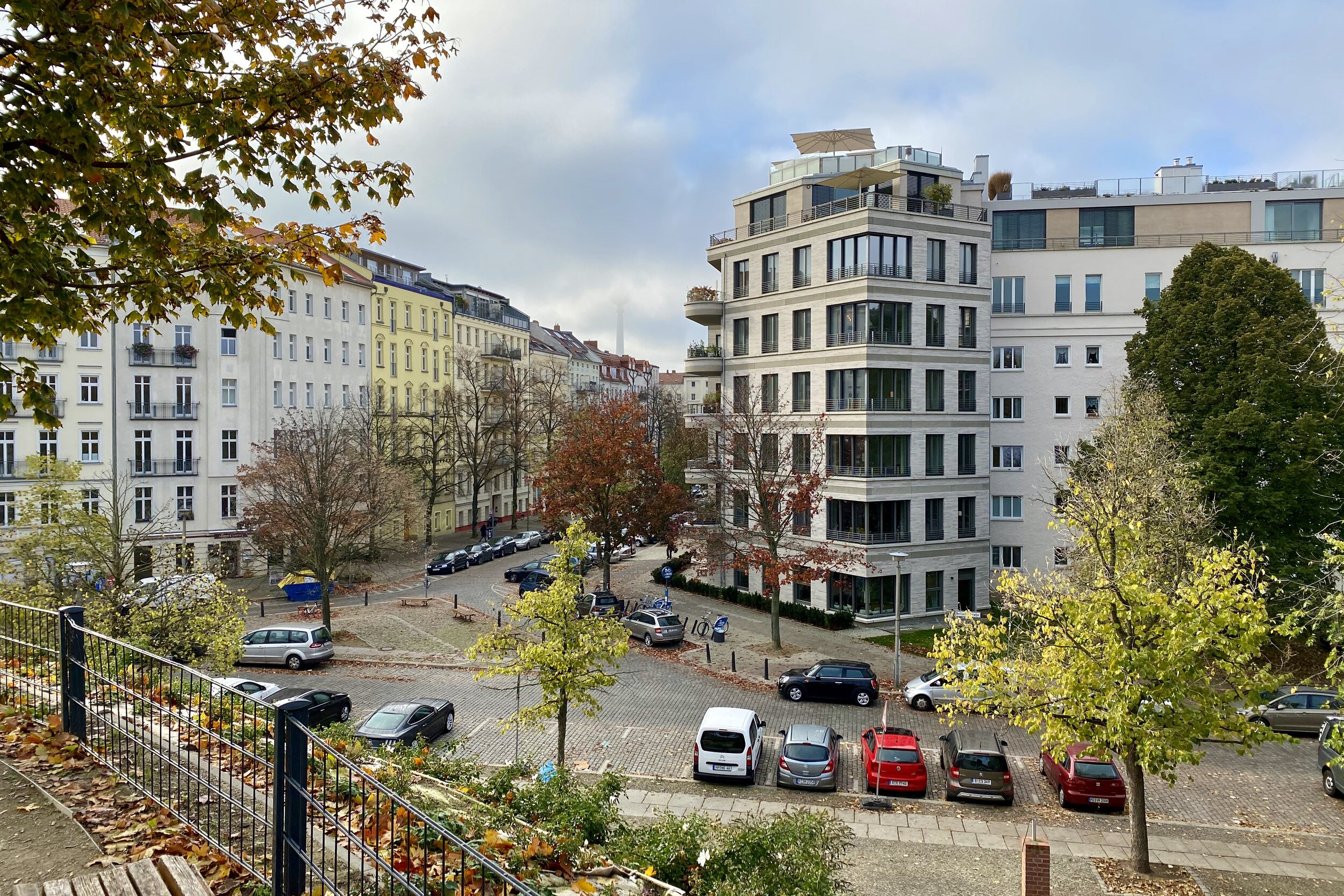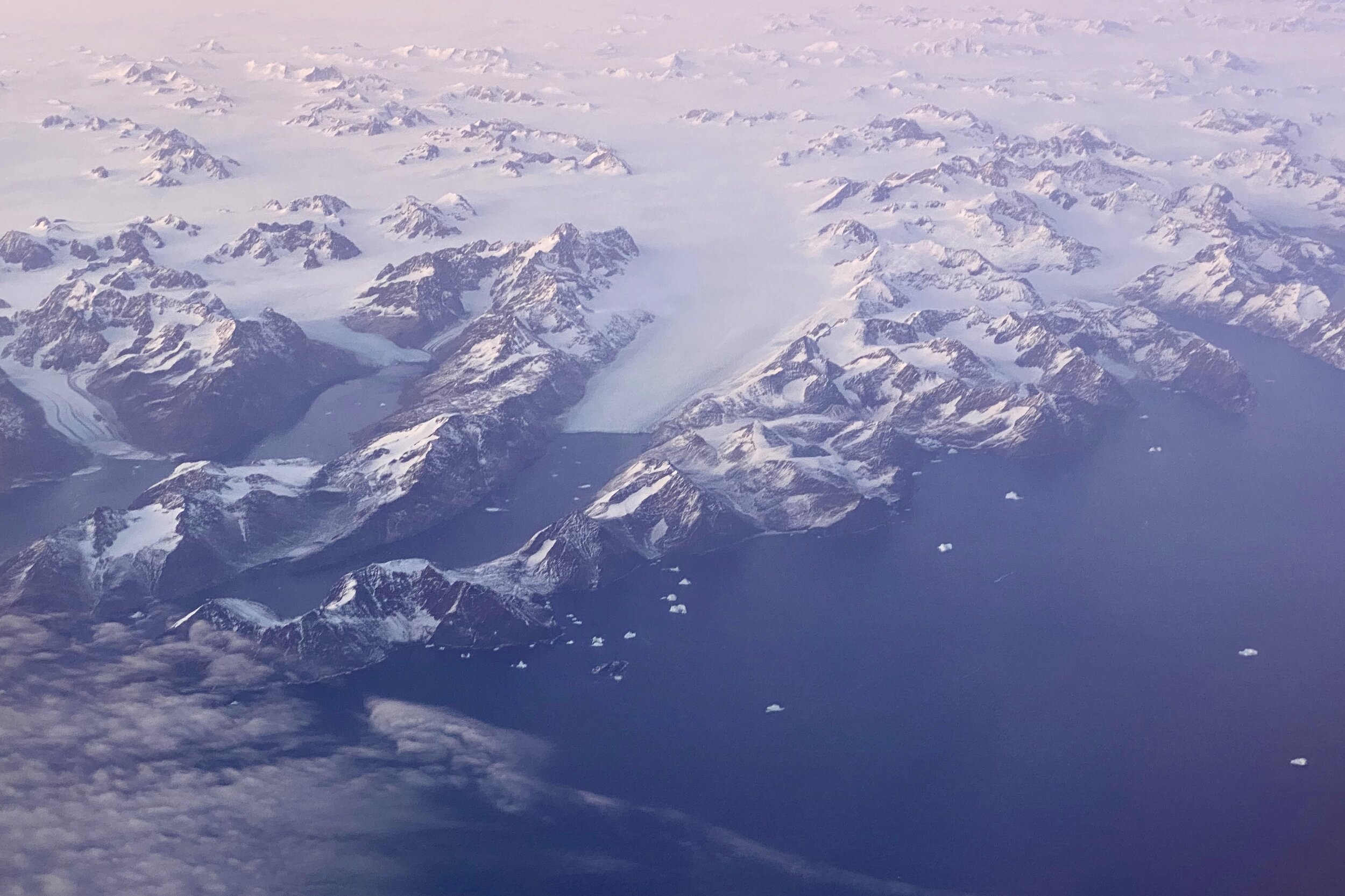Berlin to Seattle, 29–30 Oct 2019
For our last full day in Berlin, we took it easy with a short walking tour near where we were staying. After spending time in a bookstore, we went to an organ concert in the French Cathedral.
Planning the itinerary for Berlin, one of the possibilities was to take a day trip out to Potsdam, which has palaces of Prussia’s Hohenzollern royalty. It’s also the location of the Potsdam Conference after WWII. But as things worked out, we decided to stay in town. Settling on going to a concert in the middle of the afternoon cemented things, and we figured there’s still a lot to do in Berlin so a return trip would be warranted.
Prenzlauer Berg walking tour
After we finished with breakfast, we headed to the U-Bahn station near us, but this time, instead of going in, we started a walking tour of Prenzlauer Berg, an area often likened to Brooklyn.
Prenzlauer Berg didn’t suffer heavy bombing during WWII but became run down during the Cold War. Being in former East Berlin, many residents fled to the West after the Wall fell, and students, artists, and other squatters moved in, giving a bohemian feel to the area. Now that there is no more rent control, Prenzlauer Berg is becoming gentrified.
Given the hipster reputation, we weren’t surprised to find a lot of smartly-dressed people and a bunch of nice-looking baby strollers all around.
That hasn’t always been the case. Prenzlauer Berg used to be the low-rent district, being downwind of heavy industry. Apartments became extremely crowded, so some tenants would take on Schlafbursche, people who worked the night shift and sublet beds during the day.
The first stop was Wasserturm, a park at the top of a hill with water towers (giving the park its name).
Kolleotzplatz was next. It’s named after Käthe Kollwitz, the artist who did the pietá in the Neue Wacha. She lived in a building that looks over the square, and there is a museum about her in Western Berlin. She lost a son in WWI, a grandson in WWII, and her husband ran a medical office where she witnessed many of the wartime sick and downtrodden.
The Schultheiss-Brauerei was one of the largest breweries in the world, but the Nazis covered it into a factory for the armed forces. It is now called the Kulturbraueri, with cinemas, venues for theater and music, as well as the usual shops and cafés.
While strolling the Kastanienallee, the street where you go to be seen, we peeked into the building that used to be a public bathhouse. The crowded Prenzlauer Berg had shared toilets in stairwells connecting floors, so tenants would bathe at bathhouses.
Other buildings were the Drag Queen House, a building with large letters spelling what translated as, “Capitalism destroys and kills”, and Dock 11, a modern dance school and studio which attracts dancers from all around Germany.
Since we were near where part of the Wall used to be, there was a small memorial.
Our last stop was Mauerpark, which used to be in no-man’s land. It’s on a hill, and you can look down to where the West wall used to be. You can see a big wall with huge light towers like you would see at a stadium peeking up above the wall. There is indeed a stadium, and the wall was erected to prevent East Germans in the stadium from seeing the West.
Dussmann das KulturKaufhas
After quickly stopping by the room to catch our breath, we went back out to work our way to a bookstore. We needed to do a transfer at Alexanderplatz, and as we were walking along, we saw a stand selling döner kebabs (similar to a gyro, but different bread). We were hungry for lunch, so we picked up a couple. They ended up being quite large, but that didn’t stop us from practically finishing them.
Fed, we caught our connection and found our way to Dussmann das KulturKaufhas, a huge bookstore. Melody was looking for some German-language books since shipping to the States is pretty expensive.
The store is set up so all the floors above the ground floor are mezzanines, so we got a good look around the store. Even the non-public floors above were mezzanines but enclosed in glass.
There are large sections dedicated to English-language books and vinyl records. Music scores were in the basement, and there was even an electric piano where you could try them out. Several comfy chairs were set up throughout the store.
Since the Ritter-Sport store was nearby, we picked up a couple more bars. Then it was off to the French Cathedral.
Organ recital
Chocolate in hand, we went to the French Cathedral for the organ recital. We were the first customers, and the person who was doing the tickets suggested we sit on the side so we could see the organist (as is typical for churches, the organ was in a loft at the back of the church). It would give us a chance to see how he handled manipulating the stops.
The organist spoke a bit beforehand about each of the pieces, but because of the echo of the church, it was especially hard for me to follow along; Melody also said she didn't pick everything up. As he was walking towards the organ, as a former organist herself, she mentioned his organ shoes.
After climbing up the stairs to the organ, the organist sat down, put out the first score, adjusted the stops, and began. His playing was very good, clean and confident. Between each piece, he would change the score, reset the stops, then set them for the next piece. I'm not very familiar with the organ, but to my ear, he did a good job matching the stops to the different pieces. Only in a couple of the pieces did he actually change stops while playing, and you wouldn't have noticed it unless you were watching him play.
The last piece in the recital was the Hallelujah chorus from Handel's Messiah, and it sounded great. The church was relatively small and the organ sized to match, but a few times he still pulled out the really low, bone-rattling bass notes.
Rest of the day
After the concert, we stopped by the room again to pick up our laptops, then went back to the café at the co-working space. Instead of being near the front door, this time we took a table towards the back. After an hour or so, the lights got a bit dimmer. This happened a couple other times as if the café were slowly changing to a night club. After we got a bunch of things done, we headed out, stopped by the store to get a few things, then went back to the hostel.
Since we had picked up dinner, we ate in the hostel's kitchen, chatting with some of the people who were there. Afterward, we went back to the room, packed what we could, and tried to stay up a bit later than usual to help with the coming jet lag.
Heading home
We didn't need to get up very early, so breakfast and packing were leisurely. After checking out, we started the trip on the U-Bahn, streetcar, and then bus. We bought some sandwiches for dinner on our second flight, then went through security. Instead of a few, large screening stations, there were several small stations. Since there were pods with a few gates each, and our pod had four screening stations feeding it, the line wasn't long. However, since each station had only one line feeding into one bag scanner which had a pretty short belt, only one person at a time could be loading things on, including taking out computers, emptying pockets, etc.
Once we were settled near the gate, we had a quick lunch, and before too long, boarding was announced. After first/business class, the whole plane boarded at the same time, so it took a while for everyone to get seated.
We took off and settled in for the 3½ hour flight to Reykjavik, where it was a bit of a walk to the transfer gate. Since we were leaving the EU, we went through passport control; there were enough lanes open that we had no wait. We then got to a set of gates where you scan your boarding pass to get to the area with the actual gates. Melody and I both weren't let through, and the attendant said we needed to go to another line. Ends up there were quite a few of us there, and we were sent to a waiting area for a security screening. What seemed like almost half of the other people with us were sent to another line, being told that they were randomly selected for extra TSA screening.
While we were waiting, several people were anxious about the connecting flights (it was another tight layover, but not nearly as tight as our flight over). The agent tried to reassure people that the airlines knew they were going through screening. Looking at how long it was taking to get people through screening, it seemed like there would be time, but just.
In our area, we were each sent to a separate room where the officer did an explosives screening on every pocket of our bags, with electronics done separately. We then got a sticker on the back of our passport which got stamped (we were warned to not remove it until after we got through passport control in the US) and were on our way to the gate.
Boarding was already in process. Our passports were checked one more time (that made about four times during the whole layover) and individually asked about whether our bags were always in our control. Since our flight was boarding on the tarmac, we got onto buses which took us out to the plane. We had no problems getting our bags in the overhead bins, and we were on our way for the 7½ leg of our trip home.
We took off at around sunset, so we got some nice, deep colors as we were gaining altitude. Because we were flying west and going higher, we lost the sunset and it turned into late afternoon. For the whole flight, the sunset terminator was not very far behind us, so the low sun made some very distinctive shadows where there was no cloud cover, notably over Greenland where we could make out small icebergs and inland mountains. We also got a good look at Mt. Adams after crossing the Canada/US border, and Mt. Rainier was very prominent as we were taxiing to our gate.
Since we have Global Entry, passport control and customs were extremely quick, and before long we were on the train to home.





















